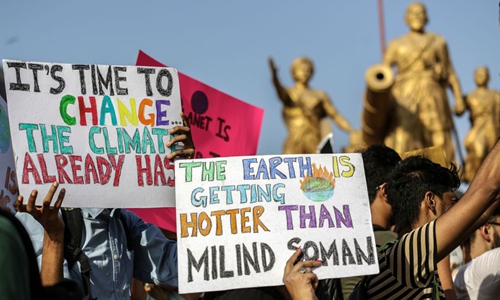India pictures national coastal mission to address impact of climate change

A climate change activist holds a placard to highlight environment hazards, deforestation and wildfires of the Amazon forest outside the Brazilian Consulate General in Mumbai, India, Aug. 23, 2019. (Photo by Fariha Farooqui/Xinhua)
India's federal minister for environment, forest and climate change Prakash Javadekar Friday said the government has envisaged establishing a national coastal mission under the national action plan on climate change.
"The mission aims at addressing impact of climate change on coastal and marine ecosystems, infrastructure and communities in coastal areas through a combination of adaptation and mitigation measures which include strengthening natural shields against extreme weather conditions to protect shorelines, assets and communities, adaptation, improved employment generation opportunities for coastal communities for reducing pressure on coastal and marine ecosystems, enhancing productivity of coastal and marine ecosystems sustainably etc," Javadekar told country's parliament, that is currently in session.

Indian people hold placards as they participate in a global climate strike in Mumbai, India, May 24, 2019. (Xinhua)
The minister said the government has launched integrated coastal zone management project in 2010 to conserve, protect and manage the coastal and maritime ecosystems of the coastal communities with the assistance of the World Bank.
"This project has been implemented in identified coastal stretches in states of Gujarat, Odisha and West Bengal. Under this project, activities related to conservation of the coastal ecosystems such as mangrove plantation, shelterbelt plantation, coral transplantation, enhancement of livelihood security of the coastal communities, pollution abatement in coastal areas, capacity building, etc have been undertaken," the minister said.
The minister quoting official study carried by the ministry of earth sciences said the rate of change of sea level off Mumbai city (in western Maharashtra) is by 0.74 mm per year between 1878-2005. The rise in sea level has resulted in an increase in beach erosion, saltwater intrusion into groundwater, adverse impact on marine and coastal biodiversity, flooding of coastal habitats.
